Zhiqiang Que
Building Machine Learning Challenges for Anomaly Detection in Science
Mar 03, 2025Abstract:Scientific discoveries are often made by finding a pattern or object that was not predicted by the known rules of science. Oftentimes, these anomalous events or objects that do not conform to the norms are an indication that the rules of science governing the data are incomplete, and something new needs to be present to explain these unexpected outliers. The challenge of finding anomalies can be confounding since it requires codifying a complete knowledge of the known scientific behaviors and then projecting these known behaviors on the data to look for deviations. When utilizing machine learning, this presents a particular challenge since we require that the model not only understands scientific data perfectly but also recognizes when the data is inconsistent and out of the scope of its trained behavior. In this paper, we present three datasets aimed at developing machine learning-based anomaly detection for disparate scientific domains covering astrophysics, genomics, and polar science. We present the different datasets along with a scheme to make machine learning challenges around the three datasets findable, accessible, interoperable, and reusable (FAIR). Furthermore, we present an approach that generalizes to future machine learning challenges, enabling the possibility of large, more compute-intensive challenges that can ultimately lead to scientific discovery.
MetaML-Pro: Cross-Stage Design Flow Automation for Efficient Deep Learning Acceleration
Feb 09, 2025Abstract:This paper presents a unified framework for codifying and automating optimization strategies to efficiently deploy deep neural networks (DNNs) on resource-constrained hardware, such as FPGAs, while maintaining high performance, accuracy, and resource efficiency. Deploying DNNs on such platforms involves addressing the significant challenge of balancing performance, resource usage (e.g., DSPs and LUTs), and inference accuracy, which often requires extensive manual effort and domain expertise. Our novel approach addresses two key issues: cross-stage co-optimization and optimization search. By seamlessly integrating programmatic DNN optimization techniques with high-level synthesis (HLS)-based metaprogramming and leveraging advanced design space exploration (DSE) strategies like Bayesian optimization, the framework automates both top-down and bottom-up design flows, reducing the need for manual intervention and domain expertise. The proposed framework introduces customizable optimization, transformation, and control blocks to enhance DNN accelerator performance and resource efficiency. Experimental results demonstrate up to a 92\% DSP and 89\% LUT usage reduction for select networks, while preserving accuracy, along with a 15.6-fold reduction in optimization time compared to grid search. These results underscore the novelty and potential of the proposed framework for automated, resource-efficient DNN accelerator designs.
Sets are all you need: Ultrafast jet classification on FPGAs for HL-LHC
Feb 02, 2024
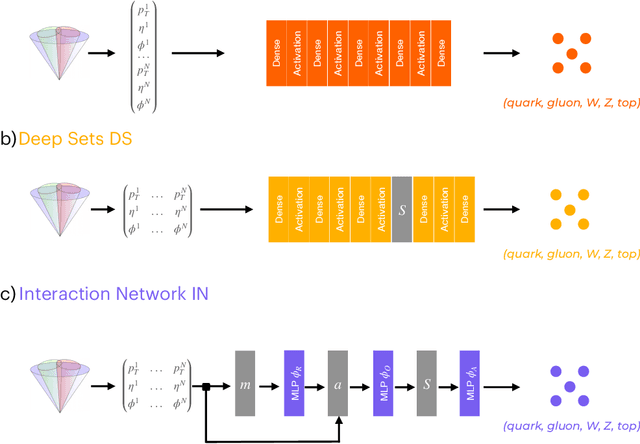
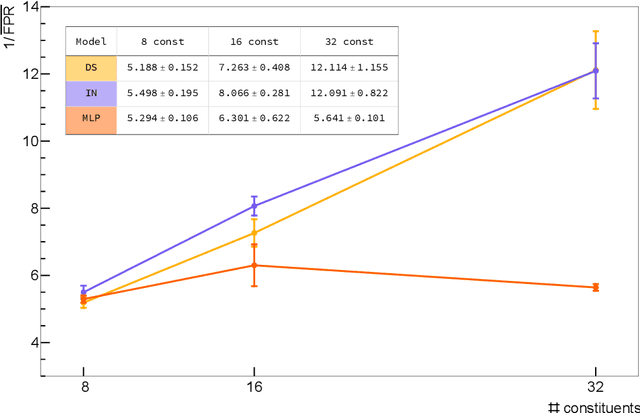

Abstract:We study various machine learning based algorithms for performing accurate jet flavor classification on field-programmable gate arrays and demonstrate how latency and resource consumption scale with the input size and choice of algorithm. These architectures provide an initial design for models that could be used for tagging at the CERN LHC during its high-luminosity phase. The high-luminosity upgrade will lead to a five-fold increase in its instantaneous luminosity for proton-proton collisions and, in turn, higher data volume and complexity, such as the availability of jet constituents. Through quantization-aware training and efficient hardware implementations, we show that O(100) ns inference of complex architectures such as deep sets and interaction networks is feasible at a low computational resource cost.
When Monte-Carlo Dropout Meets Multi-Exit: Optimizing Bayesian Neural Networks on FPGA
Aug 13, 2023Abstract:Bayesian Neural Networks (BayesNNs) have demonstrated their capability of providing calibrated prediction for safety-critical applications such as medical imaging and autonomous driving. However, the high algorithmic complexity and the poor hardware performance of BayesNNs hinder their deployment in real-life applications. To bridge this gap, this paper proposes a novel multi-exit Monte-Carlo Dropout (MCD)-based BayesNN that achieves well-calibrated predictions with low algorithmic complexity. To further reduce the barrier to adopting BayesNNs, we propose a transformation framework that can generate FPGA-based accelerators for multi-exit MCD-based BayesNNs. Several novel optimization techniques are introduced to improve hardware performance. Our experiments demonstrate that our auto-generated accelerator achieves higher energy efficiency than CPU, GPU, and other state-of-the-art hardware implementations.
MetaML: Automating Customizable Cross-Stage Design-Flow for Deep Learning Acceleration
Jun 14, 2023Abstract:This paper introduces a novel optimization framework for deep neural network (DNN) hardware accelerators, enabling the rapid development of customized and automated design flows. More specifically, our approach aims to automate the selection and configuration of low-level optimization techniques, encompassing DNN and FPGA low-level optimizations. We introduce novel optimization and transformation tasks for building design-flow architectures, which are highly customizable and flexible, thereby enhancing the performance and efficiency of DNN accelerators. Our results demonstrate considerable reductions of up to 92\% in DSP usage and 89\% in LUT usage for two networks, while maintaining accuracy and eliminating the need for human effort or domain expertise. In comparison to state-of-the-art approaches, our design achieves higher accuracy and utilizes three times fewer DSP resources, underscoring the advantages of our proposed framework.
LL-GNN: Low Latency Graph Neural Networks on FPGAs for Particle Detectors
Oct 11, 2022
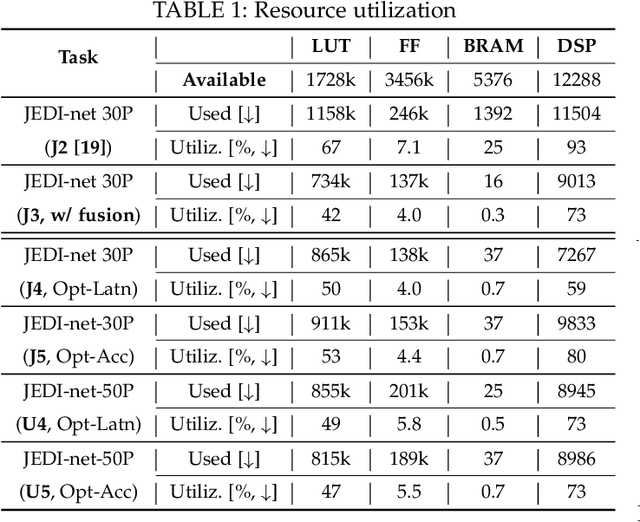
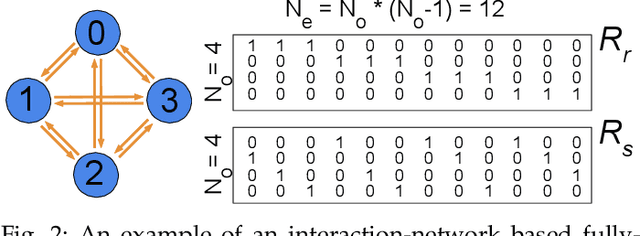
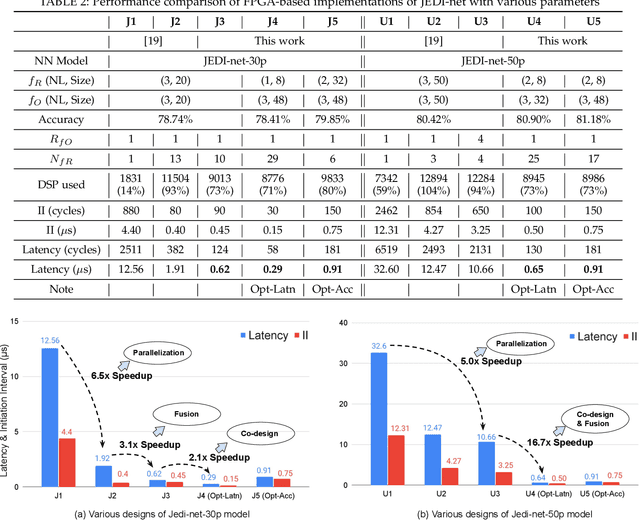
Abstract:This work proposes a novel reconfigurable architecture for low latency Graph Neural Network (GNN) design specifically for particle detectors. Adopting FPGA-based GNNs for particle detectors is challenging since it requires sub-microsecond latency to deploy the networks for online event selection in the Level-1 triggers for the CERN Large Hadron Collider experiments. This paper proposes a custom code transformation with strength reduction for the matrix multiplication operations in the interaction-network based GNNs with fully connected graphs, which avoids the costly multiplication. It exploits sparsity patterns as well as binary adjacency matrices, and avoids irregular memory access, leading to a reduction in latency and improvement in hardware efficiency. In addition, we introduce an outer-product based matrix multiplication approach which is enhanced by the strength reduction for low latency design. Also, a fusion step is introduced to further reduce the design latency. Furthermore, an GNN-specific algorithm-hardware co-design approach is presented which not only finds a design with a much better latency but also finds a high accuracy design under a given latency constraint. Finally, a customizable template for this low latency GNN hardware architecture has been designed and open-sourced, which enables the generation of low-latency FPGA designs with efficient resource utilization using a high-level synthesis tool. Evaluation results show that our FPGA implementation is up to 24 times faster and consumes up to 45 times less power than a GPU implementation. Compared to our previous FPGA implementations, this work achieves 6.51 to 16.7 times lower latency. Moreover, the latency of our FPGA design is sufficiently low to enable deployment of GNNs in a sub-microsecond, real-time collider trigger system, enabling it to benefit from improved accuracy.
Algorithm and Hardware Co-design for Reconfigurable CNN Accelerator
Nov 24, 2021
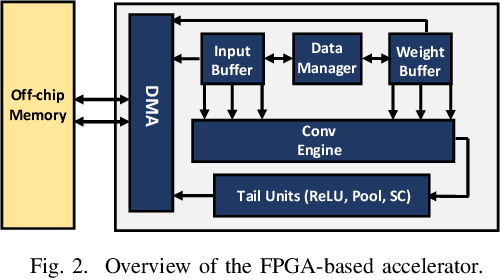
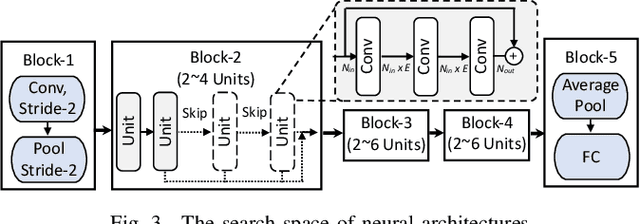
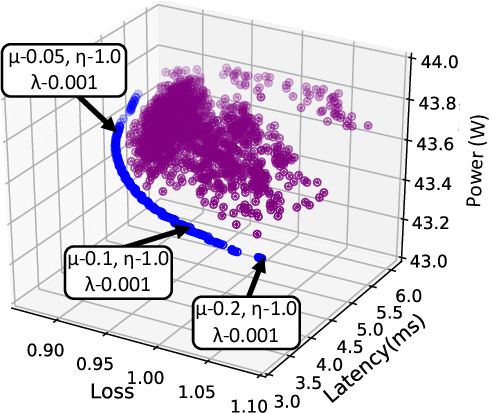
Abstract:Recent advances in algorithm-hardware co-design for deep neural networks (DNNs) have demonstrated their potential in automatically designing neural architectures and hardware designs. Nevertheless, it is still a challenging optimization problem due to the expensive training cost and the time-consuming hardware implementation, which makes the exploration on the vast design space of neural architecture and hardware design intractable. In this paper, we demonstrate that our proposed approach is capable of locating designs on the Pareto frontier. This capability is enabled by a novel three-phase co-design framework, with the following new features: (a) decoupling DNN training from the design space exploration of hardware architecture and neural architecture, (b) providing a hardware-friendly neural architecture space by considering hardware characteristics in constructing the search cells, (c) adopting Gaussian process to predict accuracy, latency and power consumption to avoid time-consuming synthesis and place-and-route processes. In comparison with the manually-designed ResNet101, InceptionV2 and MobileNetV2, we can achieve up to 5% higher accuracy with up to 3x speed up on the ImageNet dataset. Compared with other state-of-the-art co-design frameworks, our found network and hardware configuration can achieve 2% ~ 6% higher accuracy, 2x ~ 26x smaller latency and 8.5x higher energy efficiency.
Applications and Techniques for Fast Machine Learning in Science
Oct 25, 2021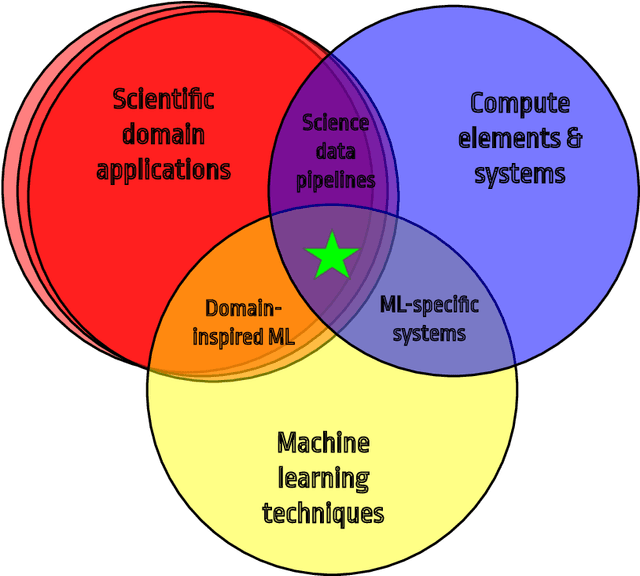
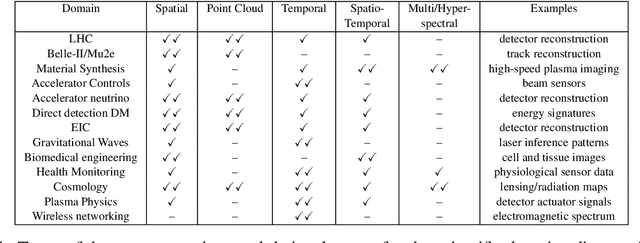
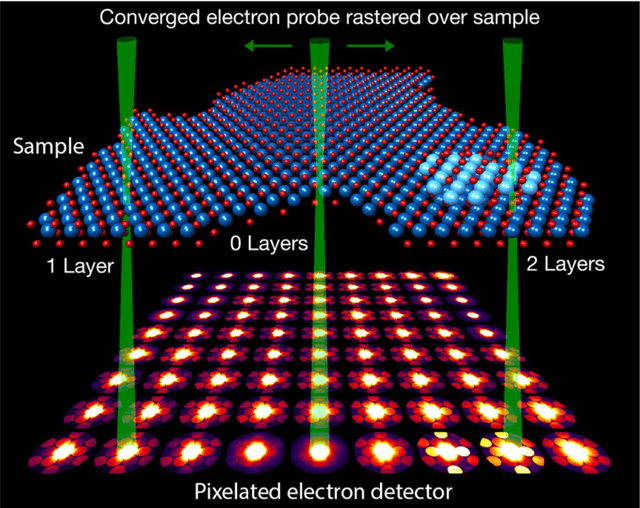

Abstract:In this community review report, we discuss applications and techniques for fast machine learning (ML) in science -- the concept of integrating power ML methods into the real-time experimental data processing loop to accelerate scientific discovery. The material for the report builds on two workshops held by the Fast ML for Science community and covers three main areas: applications for fast ML across a number of scientific domains; techniques for training and implementing performant and resource-efficient ML algorithms; and computing architectures, platforms, and technologies for deploying these algorithms. We also present overlapping challenges across the multiple scientific domains where common solutions can be found. This community report is intended to give plenty of examples and inspiration for scientific discovery through integrated and accelerated ML solutions. This is followed by a high-level overview and organization of technical advances, including an abundance of pointers to source material, which can enable these breakthroughs.
Accelerating Recurrent Neural Networks for Gravitational Wave Experiments
Jun 26, 2021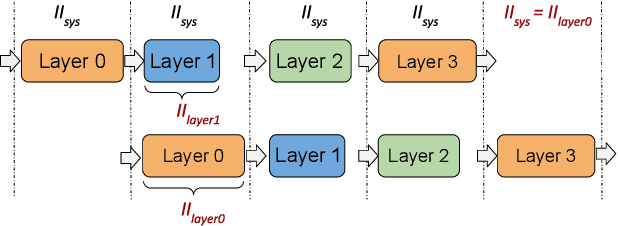
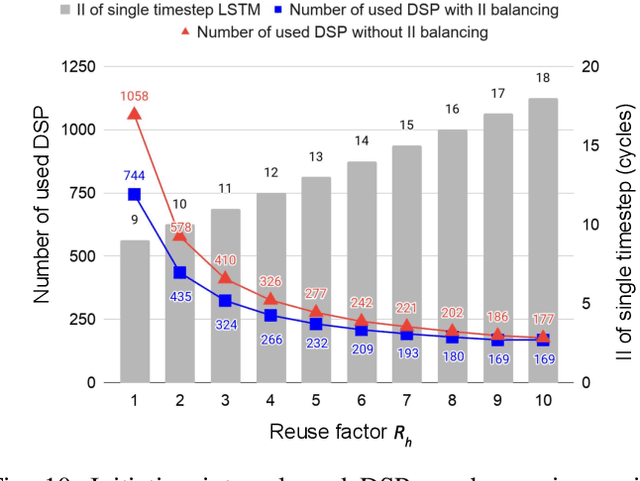
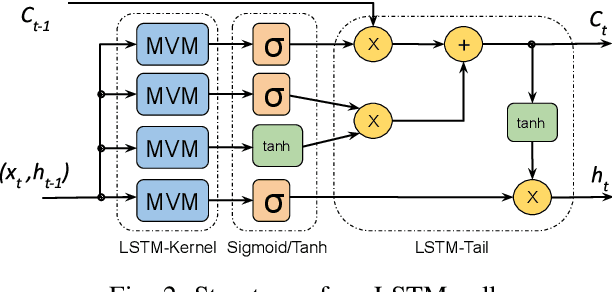

Abstract:This paper presents novel reconfigurable architectures for reducing the latency of recurrent neural networks (RNNs) that are used for detecting gravitational waves. Gravitational interferometers such as the LIGO detectors capture cosmic events such as black hole mergers which happen at unknown times and of varying durations, producing time-series data. We have developed a new architecture capable of accelerating RNN inference for analyzing time-series data from LIGO detectors. This architecture is based on optimizing the initiation intervals (II) in a multi-layer LSTM (Long Short-Term Memory) network, by identifying appropriate reuse factors for each layer. A customizable template for this architecture has been designed, which enables the generation of low-latency FPGA designs with efficient resource utilization using high-level synthesis tools. The proposed approach has been evaluated based on two LSTM models, targeting a ZYNQ 7045 FPGA and a U250 FPGA. Experimental results show that with balanced II, the number of DSPs can be reduced up to 42% while achieving the same IIs. When compared to other FPGA-based LSTM designs, our design can achieve about 4.92 to 12.4 times lower latency.
High-Performance FPGA-based Accelerator for Bayesian Recurrent Neural Networks
Jun 04, 2021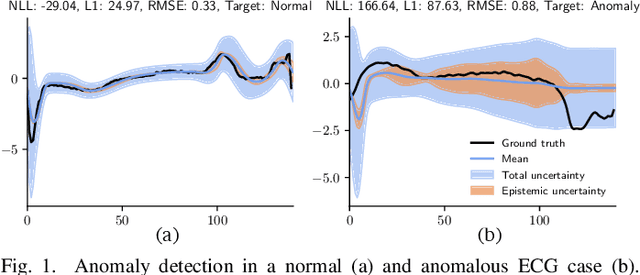
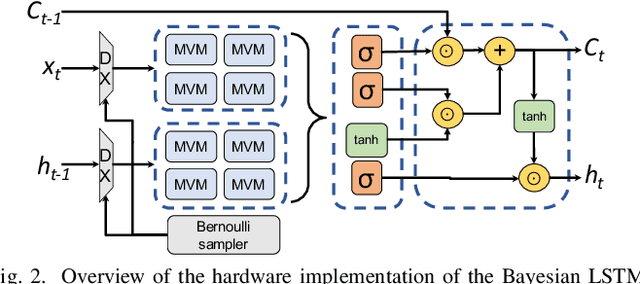
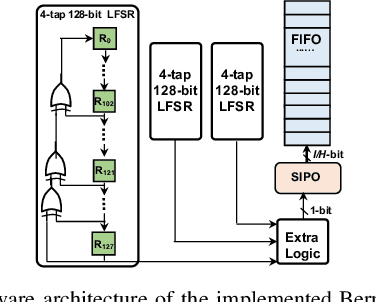

Abstract:Neural networks have demonstrated their great performance in a wide range of tasks. Especially in time-series analysis, recurrent architectures based on long-short term memory (LSTM) cells have manifested excellent capability to model time dependencies in real-world data. However, standard recurrent architectures cannot estimate their uncertainty which is essential for safety-critical applications such as in medicine. In contrast, Bayesian recurrent neural networks (RNNs) are able to provide uncertainty estimation with improved accuracy. Nonetheless, Bayesian RNNs are computationally and memory demanding, which limits their practicality despite their advantages. To address this issue, we propose an FPGA-based hardware design to accelerate Bayesian LSTM-based RNNs. To further improve the overall algorithmic-hardware performance, a co-design framework is proposed to explore the most optimal algorithmic-hardware configurations for Bayesian RNNs. We conduct extensive experiments on health-related tasks to demonstrate the improvement of our design and the effectiveness of our framework. Compared with GPU implementation, our FPGA-based design can achieve up to 10 times speedup with nearly 106 times higher energy efficiency. To the best of our knowledge, this is the first work targeting the acceleration of Bayesian RNNs on FPGAs.
 Add to Chrome
Add to Chrome Add to Firefox
Add to Firefox Add to Edge
Add to Edge